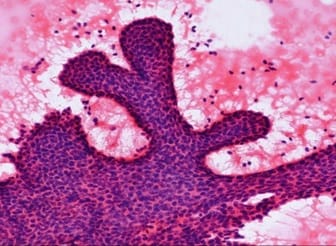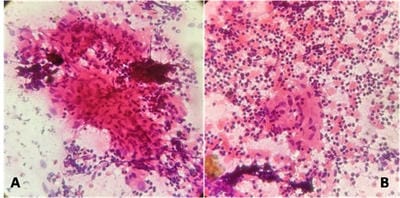Cytomorphological study of Benign breast lesions in a Tertiary Care Hospital
Alexander M.1, A. Pattanashetti M.2*
DOI: https://doi.org/10.17511/jopm.2021.i04.04
1 Manika Alexander, MBBS, MD Pathology, Associate Professor, Department of Pathology, Gadag Institute of Medical Sciences, Gadag, Karnataka, India.
2* Mallikarjun A. Pattanashetti, MBBS, MD Pathology, Assistant Professor, Department of Pathology, Gadag Institute of Medical Sciences, Gadag, Karnataka, India.
Background: Benign breast disease is one of the most common breast lesions in the reproductive age group. Fine needle aspiration cytology (FNAC) is one of the preliminary tests done to detect breast lesions which help in early detection and management. Studying the cytology features of various benign breast diseases was the aim of this study. Methods: This study is a cross-sectional retrospective study conducted in the Department of Pathology from 2015 to 2020. Clinical details and cytology features were collected from the Department records. Results: A total of 430 cases were collected during the study period. Age groups ranged from 16-40 years. All the cases were females. The spectrum of lesions was composed of fibroadenoma, fibrocystic change, breast abscess, fibroadenosis, granulomatous mastitis, etc. Conclusions: Breast lumps are a common cause of anxiety and apprehension among patients. FNAC helps in rapid diagnosis and early management of lesions. It also helps in preventing unnecessary invasive surgeries in non-neoplastic and benign breast diseases.
Keywords: Alexander M. et al: Cytomorphological study of Benign breast lesions
| Corresponding Author | How to Cite this Article | To Browse |
|---|---|---|
| , MBBS, MD Pathology, Assistant Professor, Department of Pathology, Gadag Institute of Medical Sciences, Gadag, Karnataka, India. Email: |
Alexander M, Pattanashetti MA. Cytomorphological study of Benign breast lesions in a Tertiary Care Hospital. Trop J Pathol Microbiol. 2021;7(4):176-180. Available From https://pathology.medresearch.in/index.php/jopm/article/view/518 |


 ©
© 
